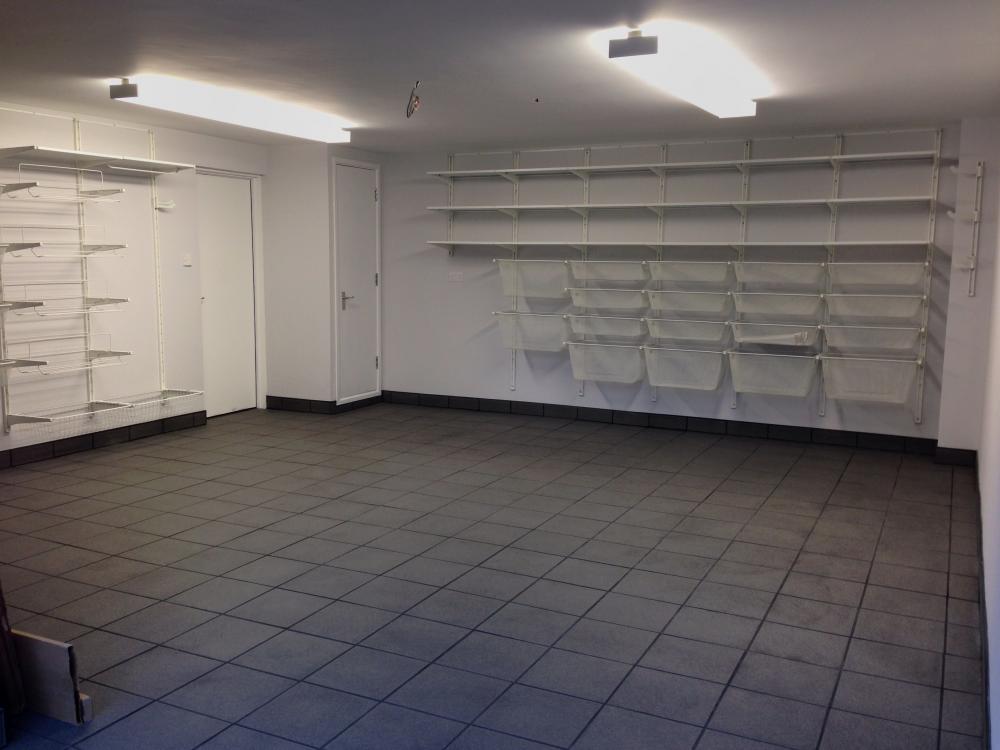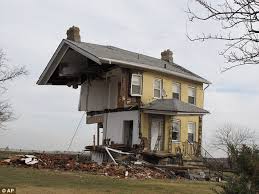Leaderboard
Popular Content
Showing content with the highest reputation on 10/26/16 in all areas
-
Hi everyone, I'm a "mature" retired electronic/electrical design engineer come computer networking consultant come PH self builder. See following link for existing building details. http://passivhausprojekte.de/#k_4186 Currently designing second PH for construction in Brinkworth, on Woodbridge park golf course. Build commences 2nd August. Also designing next door neighbours from PHPP perspective. Scandanavian Lodge design ( planning requirement), Isoquick insulated raft foundation, Beco ICF walls (polstyrene lego bricks according to my wife!), attic trussed warm roof. Approx. 240m2 and 550m3 gross including voids which are within thermal and airtight envelope. Techie bit. Hmm.. The intension was to have very similar to current house as it works well! However no mains gas so all electric. MVHR to be a Paul Novus 300 with Lindab rigid safe ducting, silencers etc. Thermal store to be Akva Nero 750l (current house has Akvaterm std tank of 500l with top and bottom DHW coils giving up to 35l per min). Change of size result of no mains gas and probable use of Eco7 electric to supplement Solar PV via Immersun PWM switch to two high temp immersions. Space heating via VEAB CCW 125-6-2.5 in living area duct branch only - no active heating to bedrooms. Summer active cooling via VEAB CWK 125-6-2.5 in bedroom ducting only or VEAB CWK 160-6-2.5 for all areas... 3kW ASHP air to water supplying the VEAB CWK. Secondary DHW loop to provide "instant" hot water to all areas with little potted water wastage (as per current house). Well that was the plan until I discovered Sunamp and Zehnder Comfocool Q600! So undecided now although no apparent pricing/availability of Sunamp Stack.... Sunamp PV 5kW units look good but only a fraction of the capacity of a 750l TS. Multiple units look very expensive by comparison. However, need to make a decision soon I guess.......1 point
-
There have been some good topics over on eBuild and here http://forum.buildhub.org.uk/ipb/topic/533-ufh-in-passive-house-build/?page=1 regarding the need for UFH upstairs in a house built to passive standards. We've decided we will fit an UFH circuit upstairs. Mainly as we're intending to have no carpets and don't want cold feet! We're hopefully going for an MBC build and thus construction will be webbed joists with 22mm Chipboard Decking. I've seen a couple of posts that suggest people have fitted their UFH from underneath? On paper that sounds like a right ball ache? Or do MBC loose lay the floor to allow lifting and adding of spreader plates and pipes? Or.....the quote states the floor is capable of taking a 50mm screed so is putting the UFH runs on the 22mm floor and screeding an option? (I'd need to satisfy myself of ceiling heights). Just trying to get the order of events right in my head! TIA!1 point
-
Most recent fire statistics for England, UK statistics are a year older. https://www.gov.uk/government/uploads/system/uploads/attachment_data/file/532364/fire-statistics-england-1415-hosb0816.pdf There were 263 fire deaths compared to 1732 road deaths on England for the last year of statistics and we spend a lot more time at home than in our cars. 36% of fatalities were caused by cigarettes, cigars or pipes. Another 7% were caused by cigarette lighters or matches. The next highest causes of deaths were space heating appliances and candles, followed then by other electrical appliances. Considering the number of candles in use relative to electrical appliances this is extraordinary. I regularly hear warnings not to leave phones charging, but not about not using candles! 50% of fires were caused by cooking appliances, although only 6% of deaths. So no deep fat fryer, no smoking, no candles and no space heaters (I'd guess stand alone electric or gas fires) Thus 65% of all household fire related fatalities are very easily avoided. If you are building a new house that meets building regs it and you're not a fan of eating fish and chips by candle light whilst smoking your pipe and toasting your feet on a single bar electric fire I wouldn't worry about it. Smoke detectors should give ample warning of a fire in a house constructed to regs. Plasterboard doesn't burn that easily so it doesn't really matter what is behind it. It is interesting to note that 12% of houses don't have smoke alarms but 35% of fatalities occurred in houses without alarms. Maybe we should all make sure our alarms are working.1 point
-
hi Jamie, sorry plumber hasn't made it back to site yet, i ll try get them passed onto you tomorrow!1 point
-
I created a tiled skirting in the garage. I don't have a close up pic to hand unfortunately but the second image below is a zoom. It was just a cut tile with a PVC tile trim on top. Looks fine. But, it is a garage so slightly more industrial! As an aside screeding, tiling and grouting that floor nearly broke my knees The tiles were the "rock" commercial jobbies that they use in car show rooms. To top it all I bought them on line and they delivered on a pallet. delivery truck couldn't make it down the lane so I had to hand ball each pack over 150m. Far too much like hard work1 point
-
Jack, the key issue is that this isn't about right or wrong from their PoV, it's more about limiting liability. It looks like they've screwed up and you are the damage party. In essence you've got two options: (i) to come to a settlement, or (ii) to go the whole 9 yards and seek a judicial determination. In terms of (i) as far as I can see the company are putting up their hand and saying that they've cocked up and want reasonably to remedy this, but the sting in the tail is that at the same time they want to draw a line under the whole issue so that from their underwriters' viewpoint the whole issue is closed. The alternative (ii) is to go into righteous battle, and the problem here is that the courts can be fickle especially if one party has in its view made a reasonable attempt at reconciliation / settlement. The danger is that you lose or achieve a Pyrrhic victory in that you win in principle but that you don't recover full costs and the residual legal costs leave you worse off. I am not an expert here but in my view the best option for both of you would be either to accept their offer or alternatively to go back with reasonable counter offer suggesting a few well argued and (by independent assessment) reasonable tweaks; I would suspect that you've got at most one bite at this cherry. My suggestion is that you get what you can quickly and move on with your life and your project.1 point
-
Well time (quickly) and build (slowly) have moved on. So an update is in order. MVHR is to be a Zhender Q600 comfoair system with the Q600 comfocool attachment. Ductwork is rigid Lindab and currently installed in Tom's, our next door neighbours. We are both pretty much water tight although 5.8M Internorm doors are yet to be installed along with some other Internorm windows and doors. Second week in November for the remaining doors and windows. I decided to go with SunAmp 5kW PV with 5kW expansion. That is until I got the schematics and found that they (SunAmp) supplied the two units in a series configuration. So flow seriously compromised by 15mm pipework throughout. I was expecting them to be connected in parallel! So I went back to SunAmp to cancel the order and revert to thermal store. However, I am now awaiting confirmation or otherwise from SunAmp on early deployment of 10kW mini stacks which feature 22mm pipework throughout. I will get to know this week so decision in the balance. If we get offered a ministack solution then Electric based Duct heaters, rather than hydronic Veab Duct heaters will be required. We already have the VEAB units albeit the wrong diameter (too small) ..... another story! In answer to the question by PeterStarck, yes the outer EPS of the Isoquick lines up with the outer EPS of the Beco walls. The wall to truss joint was always going to be a thermal bridging challenge though not a huge issue. The warm roof comprises of 2 x staggered layers of 100mm thick PIR fastened to 11mm OSB deck (Sarking) across the external edge of the roof trusses then membraned battened and tiled. Between the trusses is an additional 100mm of acoustic/thermal insulation followed by the airtight membrane (Pro Clima Intello Plus). The roof insulation continues under the exposed ends of the trusses ( between truss and Soffit) to meet up with the wall EPS. Internally the truss to wall plate joint is filled with Thermal/acoustic insulation to minimise thermal bridging. 6kW of Solar PV is to be installed; 3kW on each of the East and West facing roofs. If looks like we will use electrically heated towel rails and an electric duct heater in the groundfloor MVHR supply loop only IF we go with SunAmp. This is because there is no stored hot water in the SunAmp based system. I have attached the space and DHW system as employed in our other Passivhaus. Clearly, this will be different for the current houses but with same functionality. Depends on whether we revert to thermal stores. roof wall junction detail v2.pdf Saddleback Heating and DHW.pdf1 point
-
Oh, and if you find a good plumber I'm happy to speak with them if there are any aspects of the remit they're unsure about.1 point
-
1 point
-
It's the soundblock version, about half as dense again as the normal (35kg a sheet). We have it on ceilings in the basement and ground floor and also used where we had pocket doors as the void obviously can't be stuffed with rockwool. Also enclosed the downstairs loo in it to prevent any awkward situations when entertaining1 point






